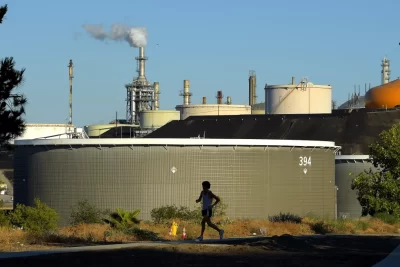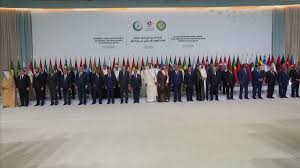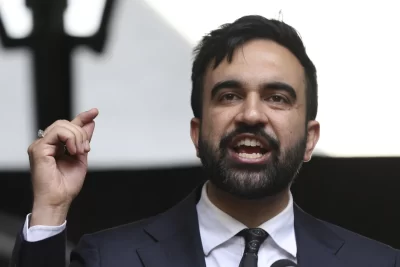
LONDON — Artificial intelligence is supercharging the threat of election disinformation worldwide, making it easy for anyone with a smartphone and a devious imagination to create fake – but convincing – content aimed at fooling voters.
It marks a quantum leap from a few years ago, when creating phony photos, videos or audio clips required teams of people with time, technical skill and money. Now, using free and low-cost generative artificial intelligence services from companies like Google and OpenAI, anyone can create high-quality “deepfakes” with just a simple text prompt.
Experts warn AI and deepfakes will likely be worse in the coming elections.
Here’s how governments and organizations are responding to the threat.
- In the U.S., the FCC outlawed AI-generated robocalls aimed to discourage voters.
- Major tech companies have signed an accord to prevent AI from being used to disrupt democratic elections worldwide.
- And a Davos report found AI-powered misinformation is the world’s biggest short-term threat.
AI-powered misinformation and disinformation is emerging as a risk as people in a slew of countries head to the polls. Read more on the 25 elections in 2024 that could change the world, and take a look at more of the AP’s global elections coverage.
A wave of AI deepfakes tied to elections in Europe and Asia has coursed through social media for months, serving as a warning for more than 50 countries heading to the polls this year.
“You don’t need to look far to see some people … being clearly confused as to whether something is real or not,” said Henry Ajder, a leading expert in generative AI based in Cambridge, England.
The question is no longer whether AI deepfakes could affect elections, but how influential they will be, said Ajder, who runs a consulting firm called Latent Space Advisory.
As the U.S. presidential race heats up, FBI Director Christopher Wray recently warned about the growing threat, saying generative AI makes it easy for “foreign adversaries to engage in malign influence.”
With AI deepfakes, a candidate’s image can be smeared, or softened. Voters can be steered toward or away from candidates — or even to avoid the polls altogether. But perhaps the greatest threat to democracy, experts say, is that a surge of AI deepfakes could erode the public’s trust in what they see and hear.
Some recent examples of AI deepfakes include:
— A video of Moldova’s pro-Western president throwing her support behind a political party friendly to Russia.
— Audio clips of Slovakia’s liberal party leader discussing vote rigging and raising the price of beer.
— A video of an opposition lawmaker in Bangladesh — a conservative Muslim majority nation — wearing a bikini.
The novelty and sophistication of the technology makes it hard to track who is behind AI deepfakes. Experts say governments and companies are not yet capable of stopping the deluge, nor are they moving fast enough to solve the problem.
As the technology improves, “definitive answers about a lot of the fake content are going to be hard to come by,” Ajder said.
ERODING TRUST
Some AI deepfakes aim to sow doubt about candidates’ allegiances.
In Moldova, an Eastern European country bordering Ukraine, pro-Western President Maia Sandu has been a frequent target. One AI deepfake that circulated shortly before local elections depicted her endorsing a Russian-friendly party and announcing plans to resign.
Officials in Moldova believe the Russian government is behind the activity. With presidential elections this year, the deepfakes aim “to erode trust in our electoral process, candidates and institutions — but also to erode trust between people,” said Olga Rosca, an adviser to Sandu. The Russian government declined to comment for this story.
China has also been accused of weaponizing generative AI for political purposes.
In Taiwan, a self-ruled island that China claims as its own, an AI deepfake gained attention earlier this year by stirring concerns about U.S. interference in local politics.
The fake clip circulating on TikTok showed U.S. Rep. Rob Wittman, vice chairman of the U.S. House Armed Services Committee, promising stronger U.S. military support for Taiwan if the incumbent party’s candidates were elected in January.
Wittman blamed the Chinese Communist Party for trying to meddle in Taiwanese politics, saying it uses TikTok — a Chinese-owned company — to spread “propaganda.”
A spokesperson for the Chinese foreign ministry, Wang Wenbin, said his government doesn’t comment on fake videos and that it opposes interference in other countries’ internal affairs. The Taiwan election, he stressed, “is a local affair of China.”
BLURRING REALITY
Audio-only deepfakes are especially hard to verify because, unlike photos and videos, they lack telltale signs of manipulated content.
It’s understandable that voters might fall for the deception, Ajder said, because humans are “much more used to judging with our eyes than with our ears.”
In the U.S., robocalls impersonating U.S. President Joe Biden urged voters in New Hampshire to abstain from voting in January’s primary election. The calls were later traced to a political consultant who said he was trying to publicize the dangers of AI deepfakes.
In poorer countries, where media literacy lags, even low-quality AI fakes can be effective.
Such was the case last year in Bangladesh, where opposition lawmaker Rumeen Farhana — a vocal critic of the ruling party — was falsely depicted wearing a bikini. The viral video sparked outrage in the conservative, majority-Muslim nation.
“They trust whatever they see on Facebook,” Farhana said.
Experts are particularly concerned about upcoming elections in India, the world’s largest democracy and where social media platforms are breeding grounds for disinformation.







